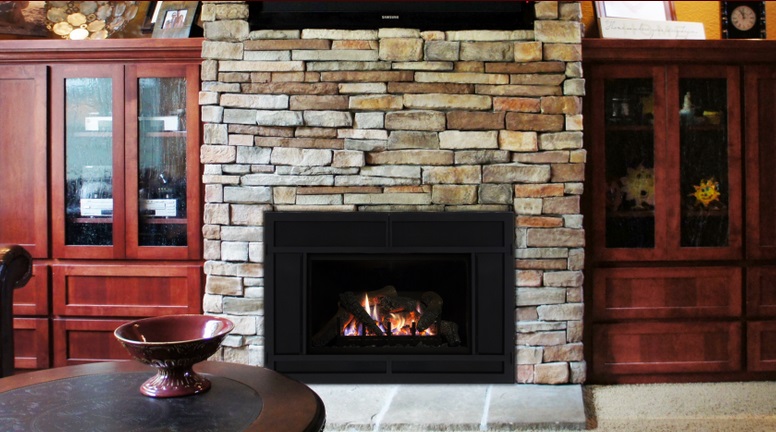Baby it’s cold outside!
Ahh….the magic of a fire dancing in the fireplace as you cosy up on a wintery day. Nice thought isn’t it? But, if the dream of this is dampened with visions of the amount of work it takes to get your traditional wood burning unit raring to go, plus its lack of efficiency in heating up other rooms holds you back, then maybe its time to look at some alternatives.
Today I want to talk a bit about gas inserts which are usually a steel or cast iron ‘box’ designed to be installed right into in an existing fireplace (either masonry or steel). They are often built with glass doors to allow you to enjoy the beauty of the flames, but providing increased energy over an older open fireplace. Fireplace inserts are very versatile and designs are available that can burn many fuels ranging from traditional wood to natural gas, propane, pellets or coal.
Fireplace inserts have a closed design that controls the amount of air entering the firebox which means the fire will burn slower and less heat will escape up the chimney than an older open design fireplace that can’t … and sends much of the heat up the chimney.
As a result, when combined with their closed glass doors, gas inserts can produce energy efficiency ratings of over 60% and open fireplaces generally have an energy efficiency rating of between 5% and 10% . Think of all the savings with the insert over time!!
Besides the cash factor, there are other reasons that an insert is a great consideration over old school fireplaces. Modern inserts (even wood burning ones) produce virtually no particle matter that ends up in the air. Since they are so clean burning (both inside and outside the house) your lungs will thank you with the clean air.
Plus let’s not forget about the obvious workload involved with traditional fireplaces in that you need to haul in wood and take away the ashes. Installing an insert that uses gas allows you to have a log set that mimics the appearance of a log fire, but without any of the hassles and dirt .
Home experts suggest that inserts actually decrease the cost of heating a home by 20% to 40%. Depending on what it now costs you to heat your home, you could actually start to see some real savings in as little as three or four years if you switch up your existing system.
Still not convinced? The HBPA (Hearth, Patio and Barbecue Association) website contains an online guide to fireplace inserts as well as a fuel efficiency calculator to help determine if a fireplace insert is right for you and also estimate your own potential cost savings. Find it here: HBPA
And whatever you do stay warm!
SOURCE: Doityourself.com., www.onestopfireplaceshop.com, Stellarhearth.com (top photo)













